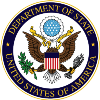Caribbean Diaspora Carnival: What Unity Can Do for Community
By: Zakiya Carr-Johnson
For forty-nine years, the West Indian American Day Carnival has taken over a main thoroughfare of Brooklyn in a panoply of brilliant color and community. Brooklyn, as home to more than 370,000 people of Caribbean descent and the most populous of New York’s five boroughs, is in many ways a natural location for such a vibrant celebration. New York itself is home to a large number of the roughly 3.6 million U.S. residents who were born in the Caribbean. This annual event falls on Labor Day, a “yearly national tribute to the contributions workers have made to the strength, prosperity, and well-being of our country,” according to the Department of Labor. The vibrancy and entrepreneurship of this celebration builds a bridge, in the form of a parade through Brooklyn that connects community to the important contributions made by Caribbean-Americans in business, political leadership, the arts, science, and education in the United States.
The Caribbean diaspora -– an influential community within New York City –- has shared their collective identity for years through this cultural manifestation. The carnival is a time to demonstrate how these communities are leveraging support, exercising their democratic right to free expression, and achieving success. The combined security, logistics, sponsorship, and organization involved in pulling off a carnival parade for 1.5 million onlookers demonstrate what unity can do for community.
The U.S. Department of State participated in the parade for the first time this year. As I walked in the front lineup to open the parade with New York State Governor Andrew Cuomo, West Indian American Day Carnival Association (WIADCA) President William Howard, and four Grand Marshals, I felt the pride of the crowd that had gathered to celebrate. It was as if they were bringing their whole selves to that moment. They were from many islands, but they were also making a statement of unity by embracing each other’s culture. As minorities in a community, we are sometimes made to feel smaller, to be subdued, but the celebrants were bold and expressive –- eating the food they love to eat, listening to the music they love, and speaking with authority about their needs as a community. It was clear during the festivities that by preserving Caribbean heritage, WIADCA is also fostering global citizens.
Events like the West Indian American Day Carnival demonstrate how diaspora can have a positive impact on their countries of origin and can help the United States as a global partner. By sharing the U.S. value of community service, diaspora inspire others to confront global challenges and to address issues of social and economic inclusion. Participating in the West Indian American Day Carnival was not only a historic opportunity for the U.S. Department of State to engage directly with the Caribbean diaspora, but also a reminder of the connection to the International Decade for People of African Descent.
Through the International Decade for People of African Descent, we have a new framework for discussing U.S. civil rights and common challenges following high-profile incidents of violence across the United States. We also recognize the Caribbean diaspora past and present in the struggle for equal rights, including in contributions made by social justice activist and acclaimed actor Harry Belafonte, who was born in New York of Caribbean parents as well as the first black Congresswoman Shirley Chisholm, who hailed from Brooklyn with roots in Barbados.
These events and initiatives remind us that the Caribbean community is an important part of the fabric of our society. It represents many nations, yet similar roots. As such, it wants what all communities want: to participate in society through recognition, justice, and development. This message was reflected throughout the day, from the kickoff breakfast to the flags masqueraders and spectators waved, as messages of support, hope, and persistence.
Carnival is a ritual that brings one back to one’s strongest self. As a representative of the State Department I was proud to join the West Indian American Day Carnival parade, an event that brought a diverse community together around a common theme of service to the community and a legacy for the next generation.
About the Author: Zakiya Carr-Johnson serves as the Director of Race, Ethnicity and Social Inclusion Unit in the Office of Policy, Planning and Coordination, U.S. Department of State.
